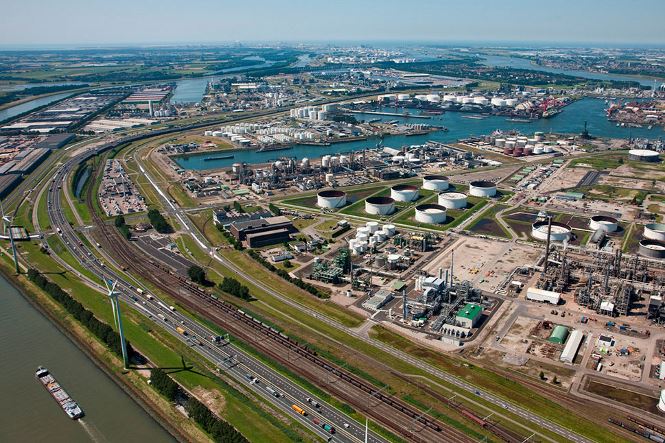The Netherlands – Air Products has unveiled plans to construct a carbon capture and carbon dioxide (CO2) treatment facility at its existing hydrogen production plant in Rotterdam, the Netherlands.
This project, anticipated to be operational by 2026, will give rise to the largest blue hydrogen plant in Europe and holds the potential to usher in a new era of clean energy.
At the core of this initiative is the concept of “blue” hydrogen—a more environmentally friendly and sustainable alternative to traditional hydrogen production. The key innovation lies in the integration of carbon capture technology, which will extract CO2 from both Air Products’ hydrogen plant and ExxonMobil’s Rotterdam refinery. This captured CO2 is part of a grand plan known as the Porthos system—a consortium dedicated to establishing a large-scale CO2 transport and storage system in the Netherlands.
Carbon footprint
The logistics are intricate but promising. The captured CO2, combined with emissions from other industries in the port of Rotterdam, will embark on a journey to depleted gas fields beneath the North Sea, about 20 kilometers off the coast. Here, at depths of over three kilometers beneath the seabed, the CO2 will find its permanent resting place. This ingenious approach will enable Air Products to dramatically reduce its CO2 emissions, making substantial strides towards the Dutch National Climate Agreement targets.
Air Products’ endeavor is not just about carbon capture; it also aligns with broader decarbonization efforts. As the company channels its resources into transitioning to green hydrogen generated from imported renewable energy sources in Rotterdam, it is making a multi-pronged effort to cut down its carbon footprint.
Partnerships and environmental goals
This venture is not a solo mission but a concerted effort, orchestrated through long-term agreements with ExxonMobil and the Dutch State. The objective is clear—blue hydrogen from Air Products’ plant will play a pivotal role in aiding industries and mobility in their transition towards cleaner energy sources.
For ExxonMobil, this is another stride in its overarching goal of achieving net-zero Scope 1 and Scope 2 emissions from its operated assets by 2050. The project epitomizes the collaborative spirit among industries in the Rotterdam port area, all working in tandem to lower carbon dioxide emissions.
The announcement is a testament to the evolving landscape of energy production and the vital role of carbon capture technology. With the creation of Europe’s largest blue hydrogen plant and a substantial reduction in CO2 emissions, Air Products’ project is poised to transform Rotterdam into a beacon of environmentally responsible industrial operations. As industries collaborate and innovate to address climate change, this project stands as a shining example of what’s possible when sustainability and ambition combine.





